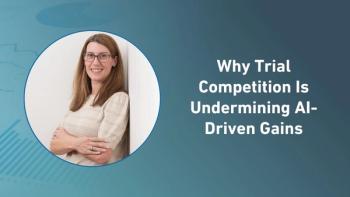Key Takeaways
- Online recruitment boosts trial efficiency and diversity: Social media platforms such as Instagram and Facebook enabled faster enrollment and improved representation in mental health clinical trials.
- Digital advertising lowers recruitment costs: Online campaigns averaged $31.37 per participant—slightly cheaper than traditional methods—with Instagram proving the most cost-effective.
- Pixel tracking dramatically improves return-on-investment: Facebook’s tracking pixel reduced cost per lead by 83%, showing the value of tech-enabled optimization in clinical trial recruitment.
Despite growing use of social media in medical research, with platforms such as Instagram and TikTok gaining traction, most trials still struggle to meet recruitment goals on time. Key factors driving platform-specific effectiveness and cost-efficiency—especially in mental health studies—remain poorly understood.
Can Social Media Solve Clinical Trial Recruitment Challenges?
A recent study published in JMIR Mental Health suggests that a combination of targeted advertising strategies, platform-specific demographics, and optimized tracking techniques can significantly enhance recruitment efficiency, cost-effectiveness, and participant diversity in mental health research, highlighting the importance of tailored online approaches for successful trial enrollment.
Mixed-Methods Approach Used to Compare Online and Traditional Recruitment
The study authors implemented a mixed-methods approach, utilizing targeted advertising campaigns across platforms such as Facebook, Instagram, TikTok, and Google, with varying ad formats, imagery, and copy lengths. They also employed technical tools such as tracking pixels to optimize targeting and measure conversion rates. Further, the study analyzed key metrics—such as cost per lead, cost per enrollment, and recruitment speed—comparing online strategies to traditional recruitment methods. These efforts supported the recruitment of more than 500 participants with depressive symptoms to validate a suicidality questionnaire, including analyses of demographic differences, ad performance, and overall cost-effectiveness.
Key Findings: Speed, Cost, and Reach Improved Through Digital Strategies
Online recruitment accounted for 46% of participants, enabling faster enrollment compared to the 54% recruited via traditional methods, such as general practitioners, psychotherapists, psychosomatic clinics, and psychiatric hospitals.
Monthly enrollment rose from 17.95 participants in the traditional group to 41.54 in the online group—a 132% increase.
From 890,145 social media impressions, the study received 6,364 ad clicks. Of those, 72.5% reached the website, and 54.8% began the prescreening survey.
Among eligible individuals who provided contact information, 65.7% responded to outreach efforts.
Traditional recruitment was estimated at $32.22 per person, while online recruitment came in slightly lower at $31.37 per person.
Instagram was the most cost-efficient platform, with a cost per enrollment of $24.79, followed by Facebook ($40.22), Google ($50.32), and TikTok ($56.36).
Facebook’s tracking pixel significantly boosted efficiency, reducing the cost per lead from $107.11 without the pixel to $17.86—a reduction of 83%, making the campaign six times more cost-effective.1
“One factor influencing advertisement efficiency was the social media platform used for advertising, as each platform has its predominant age group,” explained the study authors. “A rule of thumb with social media platforms is that teenagers and young adults mainly use the newest and trendiest platforms. At the same time, older people only switch to these platforms later or do not switch at all, resulting in social media platforms “aging up.” We also saw this effect with the TikTok population being significantly younger, followed by a slightly older group on Instagram, and Facebook having the oldest users.”
Limitations and Future Research Needs
The authors acknowledged several limitations. Clinicians involved in traditional recruitment did not consistently document the total number of approached patients, making it impossible to calculate precise conversion rates. In the online setting, small sample sizes limited sub-analyses of impact factors such as video versus static content and landing page length, reducing the ability to generalize recommendations. Additionally, variations in graphic design and imagery may have introduced selection bias by appealing to participants who identified with stereotypical portrayals, potentially affecting diversity.1
According to the World Health Organization, approximately 3.8% of the global population is currently living with depression, including 5% of all adults and 5.7% of adults older than 60.2
“This approach proved particularly effective in reaching vulnerable, hard-to-access populations and enhancing patient diversity,” concluded the study authors. “The comparable costs and faster recruitment rate relative to offline methods highlight the practical advantages of online campaigns. While key insights from tested impact factors—such as the superior cost-efficiency of video advertisements, longer landing pages, and pixel tracking—offer promising strategies for optimizing recruitment efforts, these findings are preliminary and based on limited data. Further research with larger datasets is necessary to generalize these results and refine recommendations for future studies.”
References
1. Efficient Online Recruitment of Patients With Depressive Symptoms Using Social Media: Cross-Sectional Observational Study. JMIR. Accessed July 18, 2025. https://mental.jmir.org/2025/1/e65920/
2. Depressive disorder (depression). WHO. Accessed July 18, 2025. https://www.who.int/news-room/fact-sheets/detail/depression#:~:text=An%20estimated%203.8%25%20of%20the,among%20women%20than%20among%20men.





